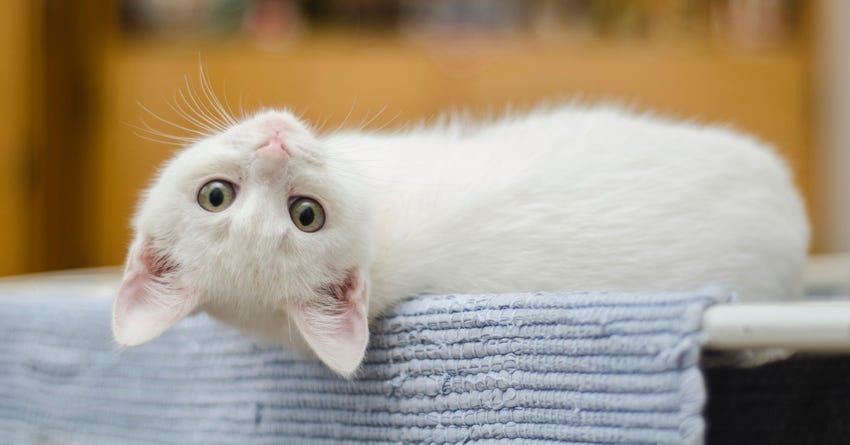Fun Facts about Your Pet's Whiskers

I was combing Kirk, my youngest cat, today and as I gently combed his head he twitched his whiskers.
Running the comb over his forehead, those whiskers twitched. Over each side of his head created the same reaction. Kirk didn't act like he was disturbed by the combing, but I also kept the grooming on his face to a minimum as I don't want him to dislike the process. However, his reaction reminded me how special and sensitive these special hairs can be.The Whiskers Are Vibrissae
Whiskers are hairs, but not the same as the hairs in your dog or cat's coat. These stiffer, thicker hairs are called vibrissae and their follicles are embedded deeper in the skin than coat hairs. Although the whiskers are different from the hair coat, they are shed as the hair coat is and will grow back. It's often been said that animals can feel with their whiskers and that's not completely true. The whiskers themselves don't feel anything. However, when a whisker touches something and the whisker moves, the nerves in those deep hair follicles react to that touch. That's where the name vibrissae comes from; the Latin word vibrio which means to vibrate. You can see how this works by touching just one of your dog or cat's whiskers. She may move that whisker away from your finger or pull her face away from your hand. It's not painful but repeated touches may well be annoying because of the reaction of the nerve to the movement. Many animals have vibrissae type whiskers, including dogs, cats, ferrets, rats, horses, and even seals.Where Are Whiskers Found?
Cats generally have four rows of whiskers on each side of the muzzle; often with twelve whiskers on each side. Tabby cats often have a dark spot in the hair coat to mark the root of each whisker. Cats of other colors may or may not have this spot. Many cats will also have whiskers above the eyes and sometimes even one or two under the chin. If you gently run your fingers over the hair on the back of your cat's front legs, you may feel some stiffer hairs there, too. Not all cats appear to have whiskers there, though. In checking my three cats, one had vibrissae on his legs and two did not. The whiskers on dogs are more variable than cats. My oldest dog, Bashir, an Australian Shepherd, has the same four rows of whiskers on each side of his muzzle that cats have, but he has considerably more whiskers under his chin. He has no whiskers above his eyes but my youngest dog, Bones, an English Shepherd, has several whiskers above each eye. A friend's Jack Russel Terrier has quite a few shorter whiskers on the sides of his muzzle and a few on his chin but none above his eyes. He does, though, have several on his cheeks. It's interesting that even hairless breeds of dogs and cats usually still have whiskers. They may not have hair coat but they do tend to have a normal complement of whiskers. ©istockphoto/Rutryin
©istockphoto/Rutryin